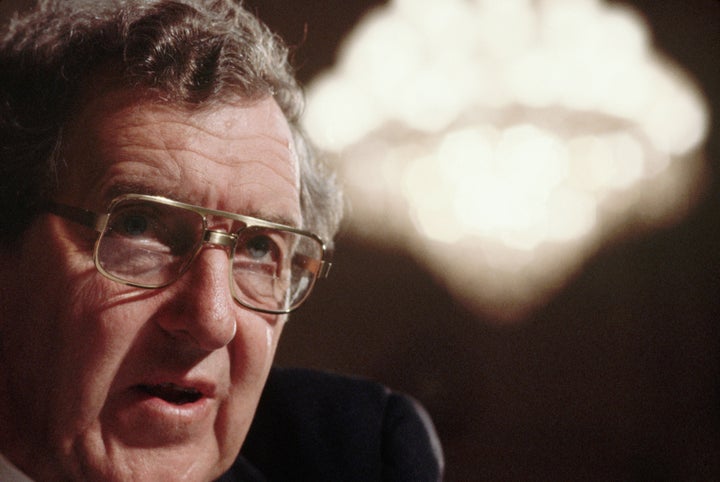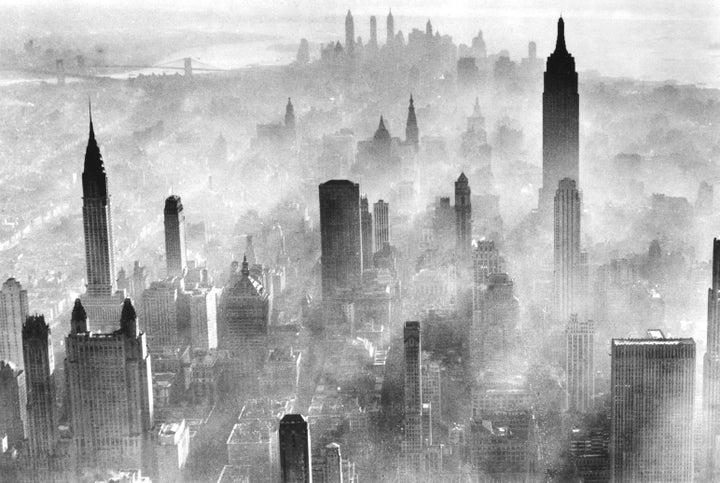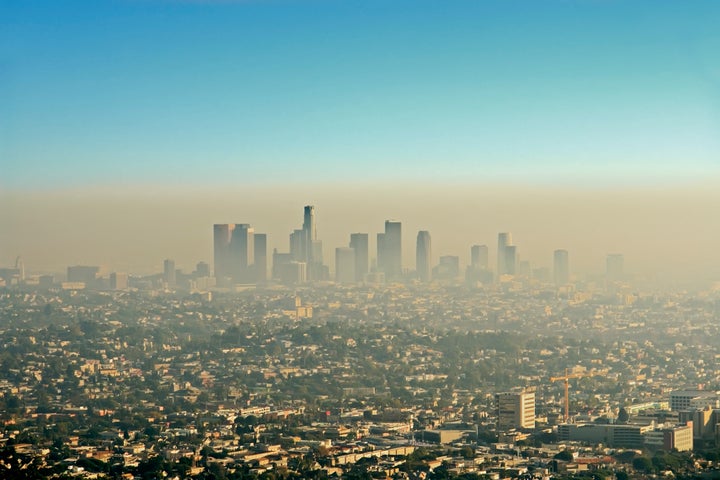Tom Jorling and Leon Billings started as colleagues, but it didn’t take them long to become friends. The 1960s were giving way to the ’70s, and the two were young aides on an obscure Senate subcommittee.
Jorling was counsel for the Republican lawmakers and Billings for the Democrats, but the party divide didn’t get in the way of what would become a lifelong bond.
During the work week, they shared rides home in a pickup truck, dictating legislative language into a recording machine they lugged along. On Fridays, they’d unwind over cheap beer and greasy sandwiches at their favorite local watering hole.
The bill the subcommittee was working on ― in hourslong hearings ― would become the Clean Air Act of 1970, one of modern America’s most consequential laws.
It passed the Senate unanimously, drew only one “no” in the House of Representatives, and was signed into law by a Republican president, Richard Nixon.
In the nearly five decades since, the Clean Air Act has saved literally millions of American lives and trillions of dollars ― $22 trillion in its first 20 years alone, government studies have found. Despite the angry protestations of polluting industries it forced to change, the law’s benefits, in dollar terms, have proved dozens of times greater than the costs.
That’s because just as higher rates of pollution are linked to more death and illness, cleaner air means fewer heart attacks and strokes, less cancer and dementia, and longer lives.
But as the Trump administration rolls back the regulations that turn the law’s principles into reality on the ground, and guts the agency charged with enforcing them, the Clean Air Act’s considerable accomplishments are at grave risk.
The Clean Air Act is far from perfect, but its successes are a testament to the idea that congressional power, when used wisely, can change Americans’ lives for the better.
Those successes were built on a process characterized by bipartisan cooperation and a seriousness that seem unimaginable today. The subcommittee was led by Sen. Edmund Muskie, a Maine Democrat, and its Republican members included two future Senate majority leaders, Bob Dole and Howard Baker.

“They had a tremendous amount of respect for each other, they listened to each other, they enjoyed each other,” recalls Jorling, the onetime aide, now in his 70s. “It was a very high-quality intellectual engagement, with a commitment to produce a product that would deliver the result.”
Back then, Americans were just waking up to the dangers of the awful air that hung over much of the nation. It wasn’t just famously smoggy Los Angeles and steel-making Pittsburgh; even in Washington, there was a coal-burning power plant a few blocks from the Capitol, and Hill staffers had to change their soot-stained shirts by midday. In New York, ash from incinerated garbage floated through the sky, and, at the bottom of the Lake in Central Park, scientists later discovered layers of lead that had permeated the air.
The senators wanted to understand why earlier laws had failed to address the pollution.
Questions of cost and technical feasibility had shaped previous environmental efforts. But Muskie, the lanky former governor of Maine, realized that put regulators at a disadvantage, because only industry could judge what was economically and technologically possible. So, the new law demoted such business considerations.

The Clean Air Act’s beating heart was this: From now on, public health ― not corporate profits ― would be the sole factor to determine how much pollution was allowed in the nation’s air. Costs could come into play later, in deciding how to meet the new national standards, but only physical well-being would be taken into account in setting them.
That proposition was revolutionary. The law gave government the power and the responsibility to protect Americans’ health.
Another groundbreaking element was an idea known as “technology-forcing regulation.” Baker, a Tennessee Republican who would later serve as President Ronald Reagan’s chief of staff, thought that if Washington required industries ― particularly auto manufacturers ― to deliver steeper pollution reductions than were possible with existing technologies, they would put their smartest engineers to work and come up with better ones.
So, the new law required carmakers to make their vehicles 90% cleaner within five years. Although Congress would later extend the timeline, Baker was proved right. Not only did the companies meet the ambitious goal, they achieved even tougher standards later.
There is no magic bullet for dirty air, no single action that dissipates it. Cleaning up requires a systematic effort, sustained over time and grounded in science, to identify pollution’s sources and require action from those responsible. And across the country, that was exactly what happened.
Thousands of changes, big and small, took root. Factories and power plants installed scrubbers and other pollution controls, cities closed garbage incinerators, states introduced auto emissions inspections and cracked down on the vapors wafting from filling stations. Lead was removed from gasoline, and as levels in the air dropped by 99%, American children were collectively spared the loss of 10 million IQ points a year.
Near the end of his life, Baker said he was so proud of the role he’d played in the Clean Air Act’s birth that he wanted the achievement etched on his gravestone.
Since then, though, his party has changed so dramatically that it’s now almost inconceivable any Republican senator might feel that way about a law that gave government such far-reaching new authority.

The Clean Air Act’s benefits can be hard to see. We’ll never know that we haven’t had a heart attack, haven’t watched a child struggle for breath, or haven’t lost a loved one because the air is so much healthier than it would have been without the law.
But the Clean Air Act, and the work of the Environmental Protection Agency in enforcing it, are why America’s air is today significantly cleaner than Europe’s, despite that continent’s reputation for environmental awareness.
“A girl on a soccer field in suburban Maryland who doesn’t have an asthma attack ― that’s a win,” says Leon Billings’ son Paul, himself an air quality advocate at the American Lung Association. “The fact people aren’t dying at the same levels as they were, that’s a win.”
For all the improvements, though, air pollution still cuts short 100,000 American lives every year ― more than guns, more than car crashes, more than the flu. But now, instead of pushing forward, we are going in reverse.
The Trump administration is trying to knock the Clean Air Act’s central pillar ― science ― out from under it. EPA leaders who until recently worked for polluting industries like coal, seek to cast doubt on the rigorous evidence linking dirty air to ill health, because that evidence provides powerful justification for regulations that cost industry money.
The agency is seeking to discredit key studies with claims that their confidentiality safeguards undermine transparency. And it has rewritten the requirements for membership on its science advisory panels to exclude many scientists, claiming conflicts of interest disqualify experts who’ve received research grants from the agency ― but not representatives of polluting industries.
Leon Billings died in 2016, exactly a week after Trump’s election. His old friend Tom Jorling is still “quietly proud” of the work the two of them did together.
But Jorling is afraid, too. After the nation spent decades building a regulatory system that puts human health above industry profit, he hates watching much of that good work be undone. “Wrecking things,” Jorling muses, “is so much easier.”
This article is adapted from ”Choked: Life and Breath in the Age of Air Pollution.”
For more content and to be part of the “This New World” community, follow our Facebook page.
HuffPost’s “This New World” series is funded by Partners for a New Economy and the Kendeda Fund. All content is editorially independent, with no influence or input from the foundations. If you have an idea or tip for the editorial series, send an email to thisnewworld@huffpost.com.
